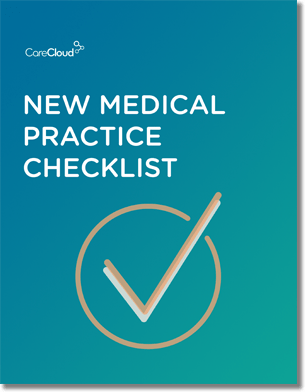By Andis Robeznieks
Changing physician behavior is an interesting art, according to David Fairchild, M.D., a director with healthcare consultants BDC Advisors.
“It’s not necessarily about financial incentives — though people think if you pay doctors to do X, doctors will do X,” Fairchild explained. “But there also has to be alignment with doing the right thing for patients and ease of workflow.”
If financial incentives, workflow, and patient interests line up, “you can achieve remarkable things,” Fairchild said, adding that one way to achieve this is through an annual goal-setting process with input from all stakeholders.
Setting goals requires learning how doctors think and how to motivate them, Fairchild said. Also, doctors are experiencing a loss of control that makes them feel like just a cog in some vast machine, but the goal-setting process gives them back some of this control, he added.
Healthcare consultants Integrated Healthcare Strategies developed a list of the 50 best governance practices for medical groups. Numbers 29 to 33 fall under the heading “Setting Strategic Direction.”
These include: setting priorities and approving the strategic plan, adopting policies and procedures spelling out how strategic plans are developed and updated (including time frames, plus who is involved and what they should do), adopting criteria for evaluating proposed new programs and services, and ensuring that plans are specific and measurable with accountability for implementation clearly identified.
Drawn from research by the Governance Institute of Hospitals and Health Systems and a study commissioned by the American Medical Group Association, IHS emphasized in best practice #34 that an annual goal-setting process should be treated as a top priority of a medical group board.
Also, #30 on the list states that “The board discusses the needs of all key stakeholders served by the group when setting the long-range direction for the organization.” But this is one best practice that is not always followed.
With mergers and the proportion of employed physicians on the rise, IHS Managing Director and Senior Medical Advisor William Jessee, M.D., noted during a presentation at the AMGA’s 2015 annual conference that, along with these mergers, there were also “many failures or dissolutions due to culture clashes.” Also, many organizations were struggling to integrate physicians into their enterprise.
“Shared goals become critical if you’re talking about hospital-physician integration,” said Jessee in an interview. “One of the things I see a lot of is hospitals never getting the physician groups they now own involved in the goal-setting process.”
Jessee said he has one client where the physicians in the hospital-owned group say they’ve been with the system for five years and have no idea what its strategy is or what its goals are. “The physicians say ‘They’ve never talked to me,” Jessee said.
Healthcare systems need to find a mechanism to get doctors involved in the process, Jessee said, adding that doing things like scheduling 11:30 a.m. goal-setting meetings — when physicians are in the middle of seeing patients — is one way to ensure that they won’t participate in the proceedings.
“Early evening meetings — where you feed people — are still the bread and butter of this process,” Jessee said, but morning meetings don’t work for night staff who are tired and just want to go home. “If it were easy, people would be doing a better job of it.”
Dudley Morris, the senior advisor with BDC Advisors, noted that “not enough CEOs spend time in the trenches” with their physicians, which is vital to aligning physician incentives and benchmarks with system strategies on efficiency, customer alignment, and other priorities.
Healthcare faces much uncertainty over its near future with talk of repealing and replacing the Affordable Care Act, but Morris said annual goal-setting still has value.
Instead of replacement, Morris predicted “modification” of the ACA is more likely and that it’s unlikely the movement away from fee-for-service is over.
“Accountable care and the provider shift from volume to value may be slowed down, but there is too much going on with private investment (from payers and organizations) to turn the clock back,” Morris said..
Jessee agreed and said that goal-setting for value-based payments includes making decisions about where to invest limited resources. Priorities need to be set concerning buying software, hiring staff, and the remodeling of existing facilities or the building of new ones to accommodate new models of care.
“Execution of goals is more important than goal-setting,” Jessee said. “If you alienate people you need support from, it isn’t going to work.”
For example, it’s common for groups starting an accountable care organization to require their employees to seek care within the ACO. But if the ACO is not ready and staff finds the service below par, people who would have been strong advocates for the effort are now recommending friends and associates to steer clear, Jessee said.
Fairchild agreed and noted that “getting it right is important.”
He told of how, when he was an executive with a large medical group, the annual goal-setting process would include developing practice metrics that would be tested over a year but would not have any dollar values attached to them.
“That turned out to be a brilliant strategy,” Fairchild said. “If there are any flaws, you haven’t hurt anybody by it.”
He added that “you have to be careful what you incent — because you’ll get it.”
Fairchild explained that poorly developed incentives could lead to physicians gaming the system — especially with targets that are productivity based. For example, if you encourage population health or care-coordination efforts but don’t reimburse physicians for the time spent on the telephone performing these tasks, they’re tempted just to schedule people for office visits to create a Relative Value Unit (RVU).
Group Health Cooperative, a Seattle-based healthcare provider and health plan, uniquely posts its goals on the internet for public consumption. It also puts forth its strategies for reaching those goals and even offers a frank assessment where goals have fallen short.
“We believe that we lost some discipline and focus on our reliable application of care processes that drive quality improvement,” the document stated. “This is primarily due to a focus on cost containment strategies across the Enterprise, resulting in staff reductions combined with a restructuring of leadership within the Group Practice, leading to the majority of operational positions with new leaders in those roles.”
In the document, Group Health goes on to state that its overall goals include consistently providing Group Health members the best care, information, expert advice, and support; outstanding service every time; and value that exceeds needs and expectations.
It spells out a strategy of using information technology “to make the right thing the easy thing to do, with activated patients and clinicians.” This includes “opportunistic care” that anticipates all patient needs and to deliver them when they come in for a scheduled appointment.
“Our goal is that the majority of our patients finish their visit with us with all their clinical needs having been recognized,” the document states.
“The whole idea of transparency is remarkably powerful,” Fairchild said of systems publicly announcing what their goals are. “If you achieve those things, it’s a good advertisement without being an ad.”
He explained that, in this new age where consumers do comparison shopping for healthcare services, a healthcare organization doesn’t have to put its quality goals on a billboard. They can post them on their websites and, if their competitors aren’t doing the same, smart shoppers will find them lacking and choose a more transparent provider.
One of Group Health’s announced goals for 2016 was to reduce variation in clinical quality. Fairchild said this is a common goal, but it’s also one that can provide tension within a group. It requires transparent data to show who in practice is getting it right and tact to address those who aren’t.
“You find out that the doctor who thought he was great is on the bottom,” he said. “Then there’s pressure on that guy or woman to change their practice.”
The answer is to “dig in and look at workflows” to see how the top performers are achieving the goal and help the others adopt those practices, Fairchild said.
“Doctors are competitive — no one wants to be at the bottom of the list,” he explained.
Doctors like being paid to provide high-quality care rather than just a high volume of care, Fairchild said, though the systems for doing so are far from perfect, so an annual review is helpful.
“There’s always a quest to get incentive plans to get closer and closer to what represents true quality,” Fairchild said. “We’ll never get there, but it’s worth the effort.”

Do you know what you need when setting up a new medical practice?



